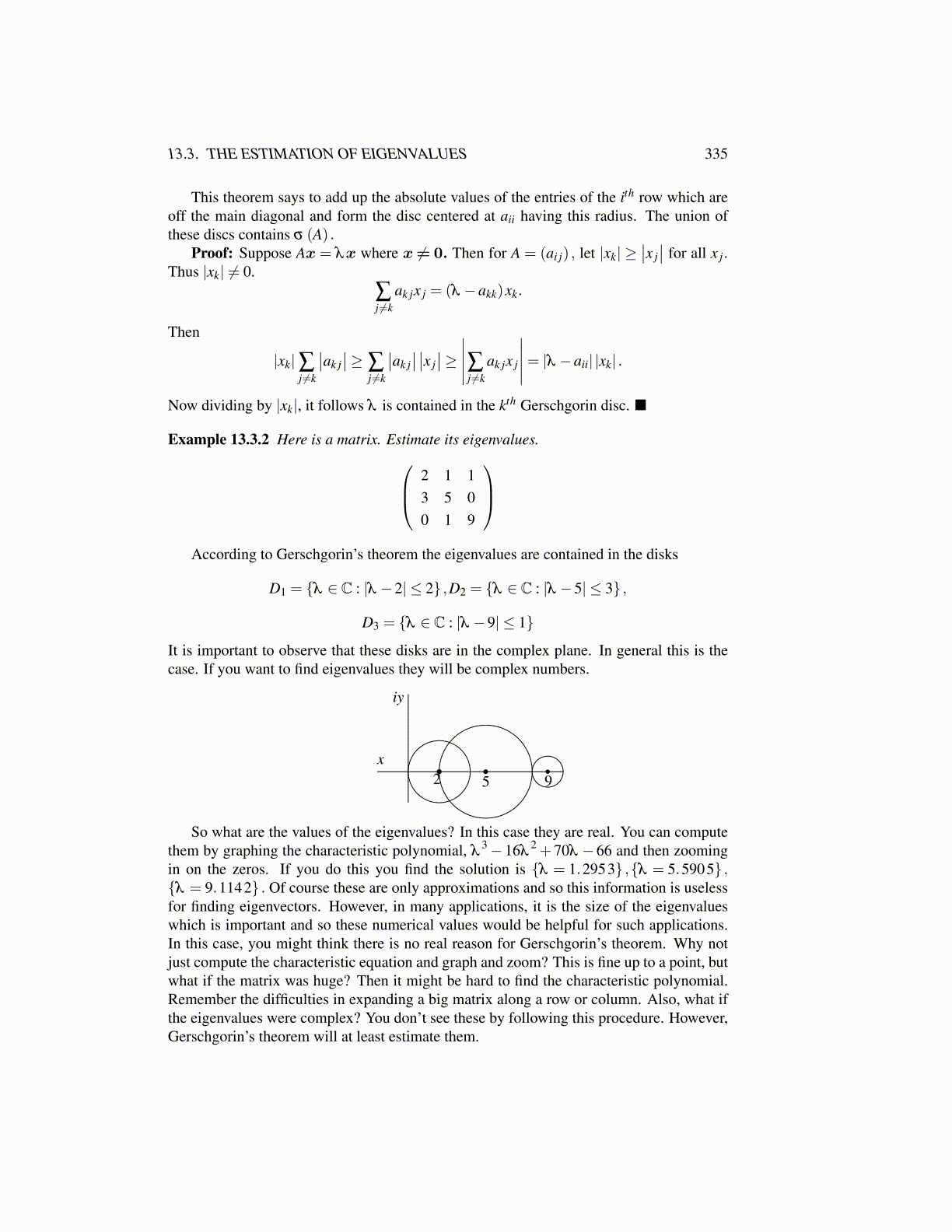
13.3. THE ESTIMATION OF EIGENVALUES 335
This theorem says to add up the absolute values of the entries of the ith row which areoff the main diagonal and form the disc centered at aii having this radius. The union ofthese discs contains σ (A) .
Proof: Suppose Ax = λx where x ̸= 0. Then for A = (ai j) , let |xk| ≥∣∣x j∣∣ for all x j.
Thus |xk| ̸= 0.∑j ̸=k
ak jx j = (λ −akk)xk.
Then
|xk|∑j ̸=k
∣∣ak j∣∣≥ ∑
j ̸=k
∣∣ak j∣∣ ∣∣x j
∣∣≥ ∣∣∣∣∣∑j ̸=kak jx j
∣∣∣∣∣= |λ −aii| |xk| .
Now dividing by |xk|, it follows λ is contained in the kth Gerschgorin disc. ■
Example 13.3.2 Here is a matrix. Estimate its eigenvalues. 2 1 13 5 00 1 9
According to Gerschgorin’s theorem the eigenvalues are contained in the disks
D1 = {λ ∈ C : |λ −2| ≤ 2} ,D2 = {λ ∈ C : |λ −5| ≤ 3} ,
D3 = {λ ∈ C : |λ −9| ≤ 1}
It is important to observe that these disks are in the complex plane. In general this is thecase. If you want to find eigenvalues they will be complex numbers.
x
iy
2 5 9
So what are the values of the eigenvalues? In this case they are real. You can computethem by graphing the characteristic polynomial, λ
3−16λ2 +70λ −66 and then zooming
in on the zeros. If you do this you find the solution is {λ = 1.2953} ,{λ = 5.5905} ,{λ = 9.1142} . Of course these are only approximations and so this information is uselessfor finding eigenvectors. However, in many applications, it is the size of the eigenvalueswhich is important and so these numerical values would be helpful for such applications.In this case, you might think there is no real reason for Gerschgorin’s theorem. Why notjust compute the characteristic equation and graph and zoom? This is fine up to a point, butwhat if the matrix was huge? Then it might be hard to find the characteristic polynomial.Remember the difficulties in expanding a big matrix along a row or column. Also, what ifthe eigenvalues were complex? You don’t see these by following this procedure. However,Gerschgorin’s theorem will at least estimate them.